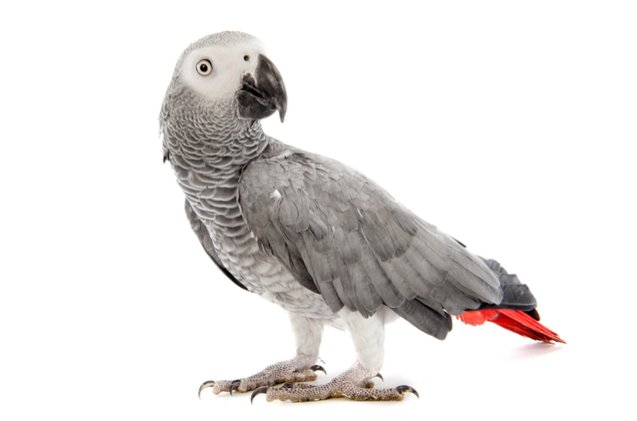African Grey Congo


About African Grey Congo
The African Grey Congo parrot is renowned for its dashing and impressive looks, captivating attention with its mysterious beauty. With a friendly nature and talkative personality, as well as a record lifespan, these parrots can become your friend for life. They are known to have a remarkable memory and the ability to connect words with their actual meanings. Even though they require a fair amount of care and attention, these parrots will return it by being one of the most desirable and fun family pets!
The African Grey is loved worldwide as an intelligent, inquisitive, and entertaining pet that also makes a lifelong companion.
These exotic parrots originate in the central, equatorial part of the African continent, thriving in the forests of Kenya, Uganda, Congo and other neighboring countries. Their numbers in the wild have been steadily declining in recent years due to illegal trapping. Thankfully, the breeders are working on preserving this breed and making it all the more available as a pet parrot without the need to endanger wild birds.
Overall Description
African Grey Congos are medium-sized parrots, and their length reaches around 13 inches on average. They do boast a broad wingspan of up to 20 inches, so make certain they have a lot of room to stretch out! Although not too large in length, they are still pretty robust and can weigh up to 1 lbs on average. These parrots can have an amazing lifespan of around 50 to 60, even 70 years as a cared for and healthy pet bird. This longevity makes them an excellent choice for a companion parrot, and they often share a deep bond and a significant portion of their lives with their owners.
Famous for their abilities as talking birds, they will not hesitate to display their intelligence and their fantastic ability to learn new sounds, words, and tricks. Most of these pet parrots develop a substantial vocabulary which they often proudly show off. They mostly rely on mimicking those sounds and tones they hear most often, like general and repeated words, or those of other birds and animals.
Both males and females of this breed are similar in their appearance, sharing a dark grey over the head, the wings, and back. The rest of the body is of a lighter gray hue, while the area around their eyes is distinctively light gray to white. One distinguishing mark of the African Grey parrot is its red tail, providing a unique and contrasting feature that makes it easily recognizable and unique.
You too will quickly be charmed by the interesting and unique appearance of the African Grey Congo!
The African Grey Congo diet is varied and needs to be nutritious and filled with necessary vitamins and minerals. The standard seed mix for large parrots will provide a stable base source of nutrients but should be combined with regular additions of fresh fruits and vegetables, like apples, oranges, bananas and plums, as well as cucumbers, corn, carrots, zucchini, and tomatoes. They will love a bit of fresh greens, holding it in their foot as they munch and crunch with a healthy appetite.
As a robust and exotic parrot, the African Grey will need looking after. In optimal conditions with sufficient care, problems shouldn’t occur, but with their great lifespan, issues are bound to happen. Be on the lookout for the classic signs that something is out of the ordinary: ruffled feathers, loss of appetite and general apathy, difficult breathing or sagging wings. Another common issue that can occur is feather picking. This is a direct result of insufficient attention, loneliness, and overall poor interaction.
This parrot will need commitment and care for decades to come. Be certain you’re ready to provide them!
The personality of these parrots is predominantly docile and gentle. Like many other parrots, the African Grey depends on social stimulation and interaction with humans and other birds. Because of their impressive intelligence, though, these parrots might need it even more than your ordinary pet bird! If neglected, your pet can become bored, mischievous, and unhappy. This can subsequently lead to the development of health issues. You’ll have to keep in mind that their remarkable intelligence requires an outlet. Provide this outlet alongside plenty of care, and it will ensure you have a healthy and happy pet parrot.
Photo credit: cynoclub/Shutterstock; Richard Susanto/Shutterstock; GaevoyB/Shutterstock

A proud mama to seven dogs and ten cats, Angela spends her days writing for her fellow pet parents and pampering her furballs, all of whom are rescues. When she's not gushing over her adorable cats or playing with her dogs, she can be found curled up with a good fantasy book.
More by Angela Vuckovic

























